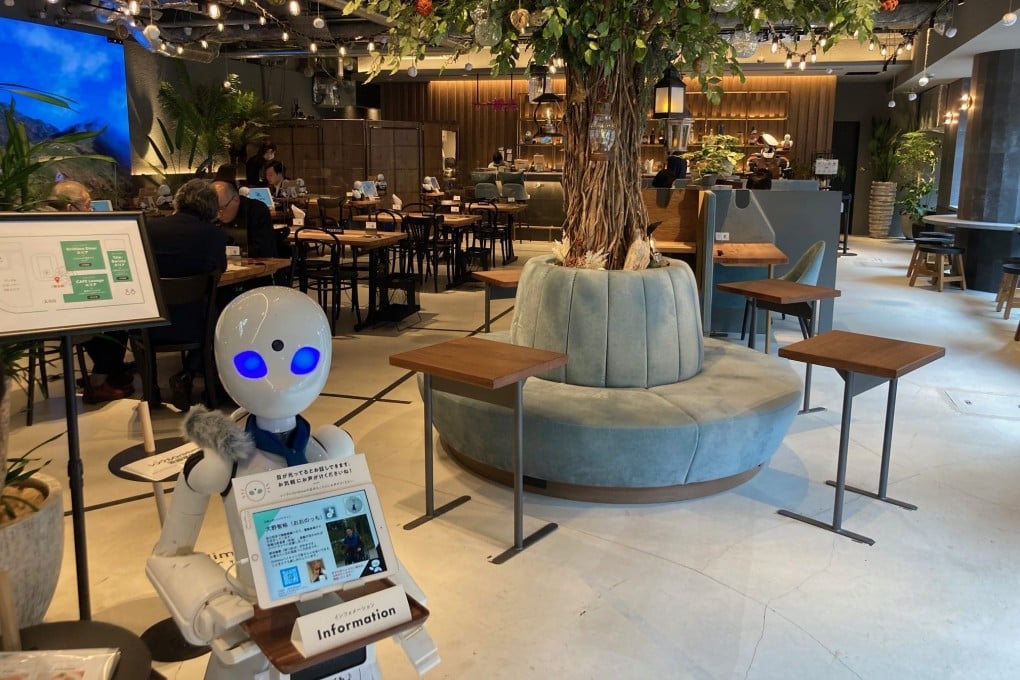Abacus | How robot avatars piloted by disabled people are changing Japan’s work routine, while helping to solve its labour shortage
- At a cafe in Tokyo, robot waiters serving a cup of java are piloted remotely by disabled workers across the country
- The initiative aims to help offset the local labour shortage and promote a more diverse workforce

I SEE YOU
I am sitting in a café in Nihombashi on the edge of the financial district close to the Bank of Japan, having just stepped out of the crisp cold air of a Tokyo winter morning for a latte. Outside the café is nothing out of the ordinary being a typical financial district coffee shop with snacks, a light lunch menu and a list of fancy coffees. But, inside could not be more different – the shop’s staff are made of white plastic.
The robot waiters, or avatars, that serve the café’s customers are remotely piloted by disabled workers, living all over the country. It aims to create a more inclusive environment for disabled customers too, with carefully thought out wheelchair access, as well as helping with the local shortage of labour.
DAWN cafe, an acronym for Diverse Avatar Working Network, is a coffee shop owned and operated by Ori Lab, a designer and manufacturer of OriHime avatar robots. The avatars, conceived by CEO Kentaro Yoshifuji, who as a child was immobile and unable to attend school though illness, found the endless staring at the ceiling haunted him as an adult and he wanted to do something about it.
After venturing into electric wheelchairs and winning national prizes for his designs, he focused on a concept communicator robot, OriHime, which today takes the form of a small desktop white plastic device with a head, eyes, something of a nose, an upper torso and two flipper type arms. It is equipped for two-way audio communication, and with a camera in the middle of its forehead, one way video. A larger model recently built, OriHime-D, is about the size of a six-year-old child and very similar in appearance to the now defunct SoftBank’s AI Pepper robot, moving around on wheels.

